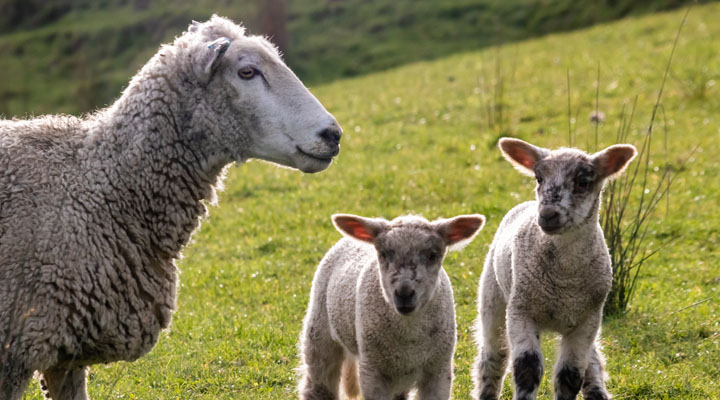Spain is the second largest producer of dairy sheep in Europe after Italy
Technology offers a solution to many of the challenges facing the sector
Europe is one of the largest producers of sheep’s milk in the world, producing about 6 million tons of goat and sheep milk annually, according to Eurostat. Of this amount, one in four liters comes from Spanish sheep. Within the country, the communities of Extremadura, Castilla y León and Andalusia have the highest production and the largest number of animals; Spain is the second largest producer of sheep’s milk in Europe, after Italy, with France trailing behind. Together, these three countries produce 9
Despite these excellent figures for the sheep milk sector, the trend over time is not encouraging. According to the latest agricultural census carried out by the INE in 2020, the number of livestock farms was reduced by 7.
In order to reverse the situation and maintain its current leadership, the dairy sheep sector needs to act immediately and improve its competitiveness. Thanks to big data tools, the cloud, artificial intelligence, the use of drones and video analytics, the productivity of other agricultural sectors is being improved. In this way, they achieve greater efficiency of economic, environmental and human resources. However, the sheep and goat dairy sector has been characterized as one of the most traditional within the agricultural sector. The Spanish sheep and goat dairy sector faces important challenges in order to maintain a relevant position in the European and international market. Climate change is the main challenge for the whole sector. Lack of pasture is one of the threats that the sheep dairy sector will face in the coming years. Another challenge for the sector is generational replacement. Compared to other agricultural activities, it is one of the youngest, followed only by poultry farming. Nevertheless, the average age in the sheep and goat sector is 51 years. In general, the agricultural sector is one of the oldest and suffers from a persistent labor shortage over time. Over the years, the situation has worsened: between 2009 and 2020, the number of family members working on the farm decreased by almost 5
One of the reasons for this lack of manpower is that agricultural work is not very attractive to the younger generation. This is why it is so important to optimize production processes, and for this digital transformation is key. Labor shortages could be alleviated through greater mechanization and automation of processes. On the one hand, it would remove some of the hard work that makes this work unattractive to new generations. On the other hand, the digital transformation of the entire value chain in a sheep dairy farm allows for more efficient use of resources, helps to make more informed decisions, and generally makes the farm more economically and environmentally sustainable. At Gradiant, we have developed several resources that have been applied with great success in the agri-food sector: from technologies integrated in UAVs, the digital twin and intelligent video processing to the use of artificial intelligence to improve genetic reproduction. This is the case of the GC4SHEEP project. The initiative uses data analysis to select males and females. This selection is carried out by pooling the protocols of the main dairy sheep breeds at national level (about 9
However, this is not the only objective of this initiative. In this project we are working to create a platform where the different actors in the production process can upload data from their farms. GC4SHEEP will be a tool for the digitalization of data processing in a very traditional sector. This enables farm managers to make real-time, big-data decisions through artificial intelligence. Another objective of the initiative is to improve the economic performance of dairy sheep farms and facilitate their restructuring and modernization. In this way, we will facilitate an increase in their national and international competitiveness. To achieve this, we also have in the program a process of dissemination and training for the agents of the value chain of the sheep sector to facilitate the process of digitization of the sector. This operational group has received a grant for the implementation of innovation projects of general interest by operational groups of the European Association for Innovation in Agricultural Productivity and Sustainability (AEI-Agri) within the framework of the National Rural Development Program 2014-2022, with funds from the European Recovery Instrument (EU Next Generation). The Managing Authority responsible for the implementation of the corresponding aid is attributed to the Directorate-General for Rural Development, Innovation and Agri-Food Training (DGDRIFA).This measure is 10
Technological transformation of the sector, key to maintaining leadership
Efficient use of resources
Other objetives




